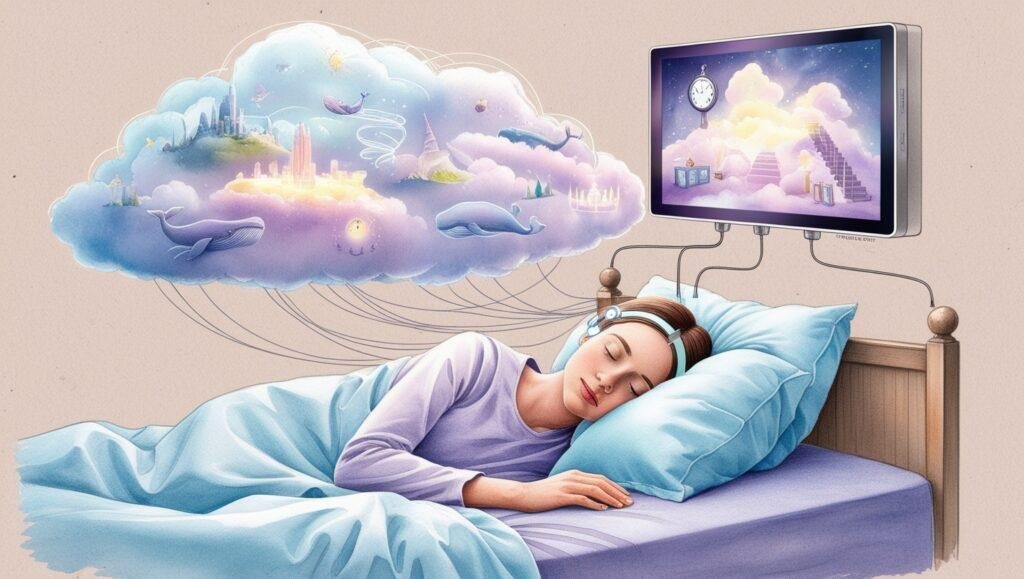What If Dreams Could Be Recorded and Played Back 2025
What If Dreams Could Be Recorded and Played Back 2025
Have you ever woken up from a dream that was so vivid, so real, and so bizarre that you wished you could hit rewind and watch it like a movie? What if you could do exactly that—record your dreams and play them back later, like checking your subconscious DVR? In 2025, researchers are inching closer to turning this once-impossible idea into a plausible reality. This concept—while still firmly rooted in speculative science—holds fascinating possibilities for entertainment, therapy, memory research, and even criminal justice.
In this blog, we’ll explore how dream recording could work, the technology and science involved, its potential applications, and the challenges that come with peering into the most private corners of the human mind.
How Do Dreams Work?
To understand how we might one day record dreams, we first need to explore what dreams actually are. Dreams occur primarily during REM (Rapid Eye Movement) sleep, a stage of sleep where the brain is highly active. The brain essentially enters a state of self-generated hallucination, drawing on memories, emotions, and abstract ideas to create vivid and often nonsensical narratives.
During REM sleep, electrical activity in the brain closely resembles waking consciousness. This makes it the ideal stage to observe and potentially decode what’s happening in the mind.
Could Dream Recording Be Possible?
The idea of recording dreams isn’t entirely new. Scientists have long been interested in decoding brain activity into images or words. With advancements in neuroscience, brain imaging, and artificial intelligence, we’re beginning to map how specific brain activity relates to visual and emotional content.
One of the most notable early experiments occurred in 2011, when researchers at the University of California, Berkeley used fMRI (functional Magnetic Resonance Imaging) and machine learning algorithms to reconstruct low-resolution videos of what participants were watching. This was a form of “mind reading,” and while primitive, it was a huge step forward.
Fast-forward to 2025: these technologies are more refined, more accessible, and more powerful. Neural networks and deep learning are now being trained to interpret not just perception (what we see when awake) but imagination and recall—both essential components of dreaming.
How Would the Technology Work?
A future dream-recording system might involve the following steps:
- Brain Monitoring During Sleep
Devices like high-resolution EEGs or wearable brain scanners would monitor neural activity during REM sleep. These would need to be non-invasive and comfortable enough for long-term use. - Neural Decoding
AI algorithms would interpret patterns in the neural data. Since each person’s brain encodes images slightly differently, the system would have to be personalized through training sessions. - Visual Reconstruction
Once brain activity is decoded, software could reconstruct the visual scenes using image-generation AI, similar to how text-to-image models like DALL·E or Midjourney work today. - Playback Interface
The final dream “video” could be rendered and played back in a VR headset or on a standard screen. Emotions and abstract ideas might be harder to translate but could be visualized as colors, sounds, or symbolic animations.




Potential Applications
If dream recording becomes a reality, the implications would stretch across many fields:
- Psychiatry & Psychology:
Therapists could use dream playback to analyze trauma, phobias, or suppressed memories. Patients might better understand their subconscious thoughts and emotions. - Creativity & Art:
Artists, writers, and musicians could harness the vivid imagery and surreal logic of dreams for inspiration. Imagine a film entirely shot based on real dreams. - Criminal Investigations:
In theory, dream recollections could serve as evidence of intent, memory of a crime, or proof of innocence—though this would raise huge legal and ethical questions. - Entertainment & Social Sharing:
People could share dreams like Instagram stories. Entire platforms might emerge for uploading and rating dreams, blurring the line between personal experience and public media. - Sleep Research:
Sleep disorders like nightmares or insomnia could be more deeply understood by observing dream content.
Ethical Concerns
Recording dreams might seem fascinating, but it also brings significant ethical risks:
- Privacy:
Dreams are arguably the most private experiences we have. Should anyone—even you—have the right to watch your subconscious thoughts? - Consent:
What if a dream recording happens without someone’s knowledge? Could this be used for manipulation or control? - Mental Health Risks:
Some dreams contain deeply disturbing or confusing content. Watching them could lead to emotional distress or confusion between reality and fiction. - Ownership:
If a dream is turned into a movie or story, who owns the rights? The dreamer? The software company?
These questions would need to be addressed through robust legal frameworks and strict ethical guidelines.
Are We Close?
In 2025, full dream recording isn’t possible yet. However, the steps required to get there are already under development. Researchers have successfully decoded basic visual imagery and are expanding that capability with AI and better brain-monitoring tools.
We may not be able to “watch” our dreams just yet, but we’re closer than ever to understanding what happens behind our closed eyelids.
Looking Forward
The idea of dream recording invites us to imagine a world where the mind can be made visible, where thoughts can be externalized, and where the private world of dreams becomes part of public life. It’s both thrilling and chilling. It opens doors for healing, creativity, and understanding—but also raises alarms about surveillance, mental health, and autonomy.
Much like the early days of photography or film, dream recording could transform how we see ourselves and each other. But it also asks us to think carefully about how much of our minds we’re truly ready to reveal.
—
Want to dive deeper into the neuroscience of dreaming? Check out this helpful resource on the science of dreaming:
https://en.wikipedia.org/wiki/Dream
—
Check out more of our thought-provoking blogs:
What If Time Travel Became Scientifically Possible
https://www.edgythoughts.com/what-if-time-travel-became-scientifically-possible-2025
What If Human Consciousness Could Be Uploaded Into Light
https://www.edgythoughts.com/what-if-human-consciousness-could-be-uploaded-into-light-2025






5 Comments